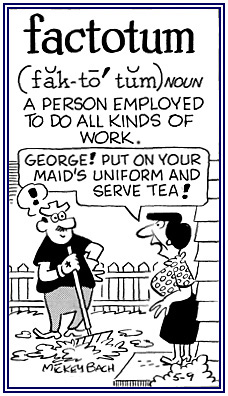Trials until first success
This is a famous problem in 50 challenging problems in probability. The question is
On the average, how many times must a die be thrown until one gets a 6 ?
Let p be the probability of getting a 6. Now we can get this at first trial with probability $p$, on 2nd trial with probability $(1-p)p$, or on 3 trial with $(1-p)^2p$ and so on.
The expected value is $N= 1p+2(1-p)p+3(1-p)^2p+4(1-p)^3p+\cdots$
$\Rightarrow N(1-p)=1(1-p)p+2(1-p)^2p+3(1-p)^3p+4(1-p)^4p+\cdots$
Subtracting we get
$\Rightarrow N(1-1+p)=p+(1-p)p+(1-p)^2p+(1-p)^3p+\cdots$
$\Rightarrow Np= p((1-p)+(1-p)^2+(1-p)^3+(1-p)^4+\cdots$
$\Rightarrow N= \frac{1}{1-(1-p)}$
$\Rightarrow N= \frac{1}{p}$
Thus if the probability of success is $p$. On an average it will take $\frac{1}{p}$ number of trials for the first success.
Labels: Mosteller, Probability











